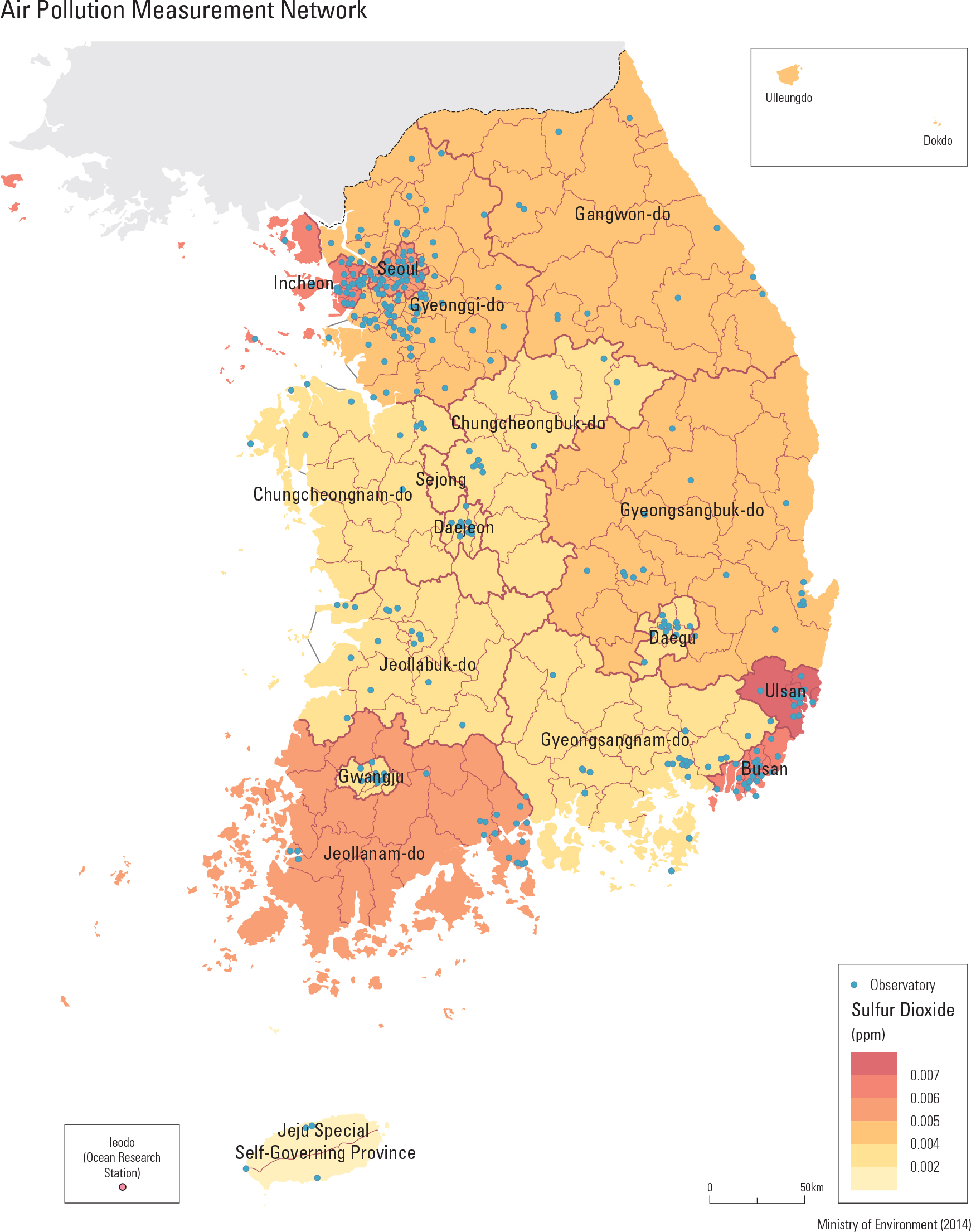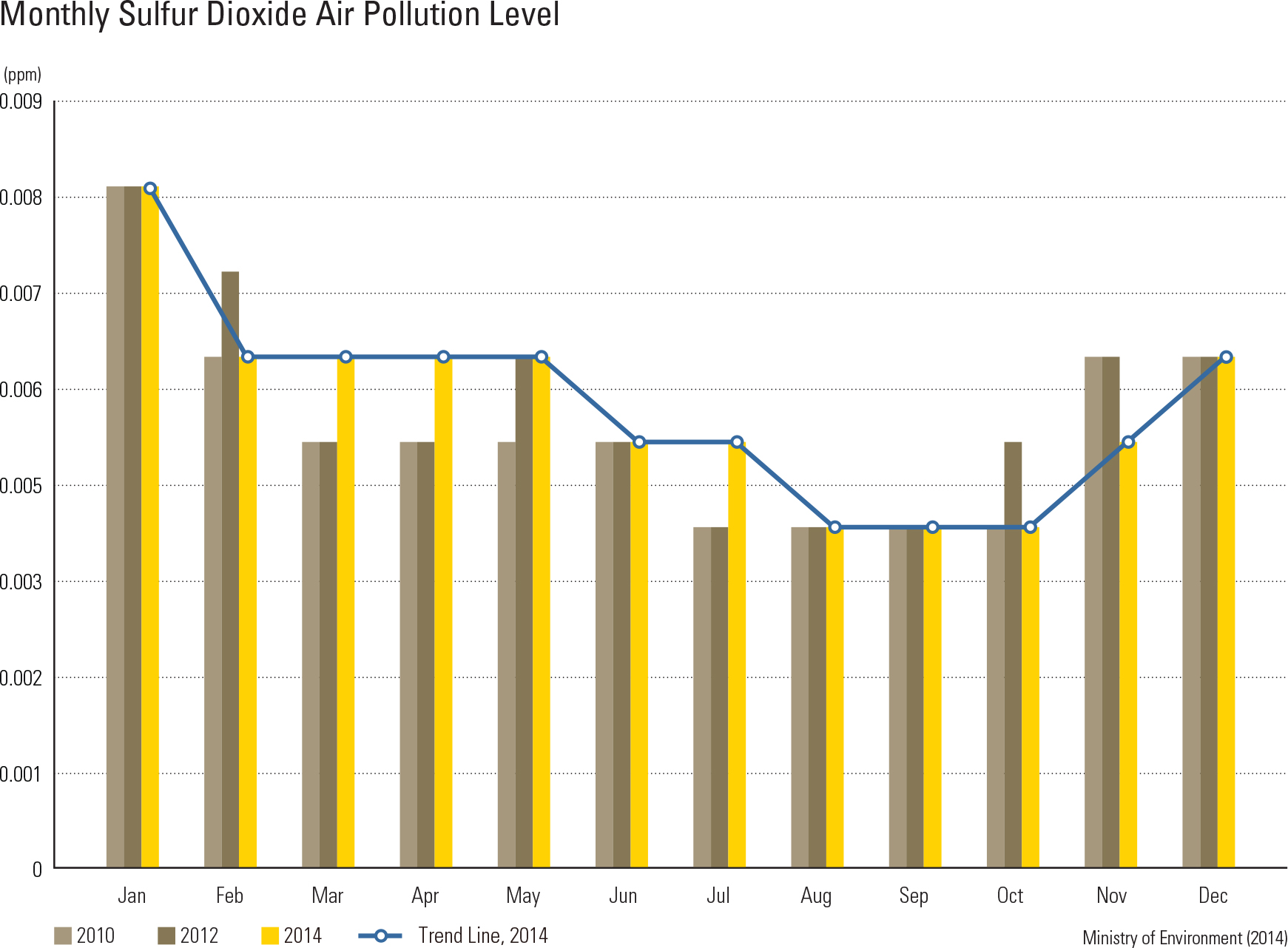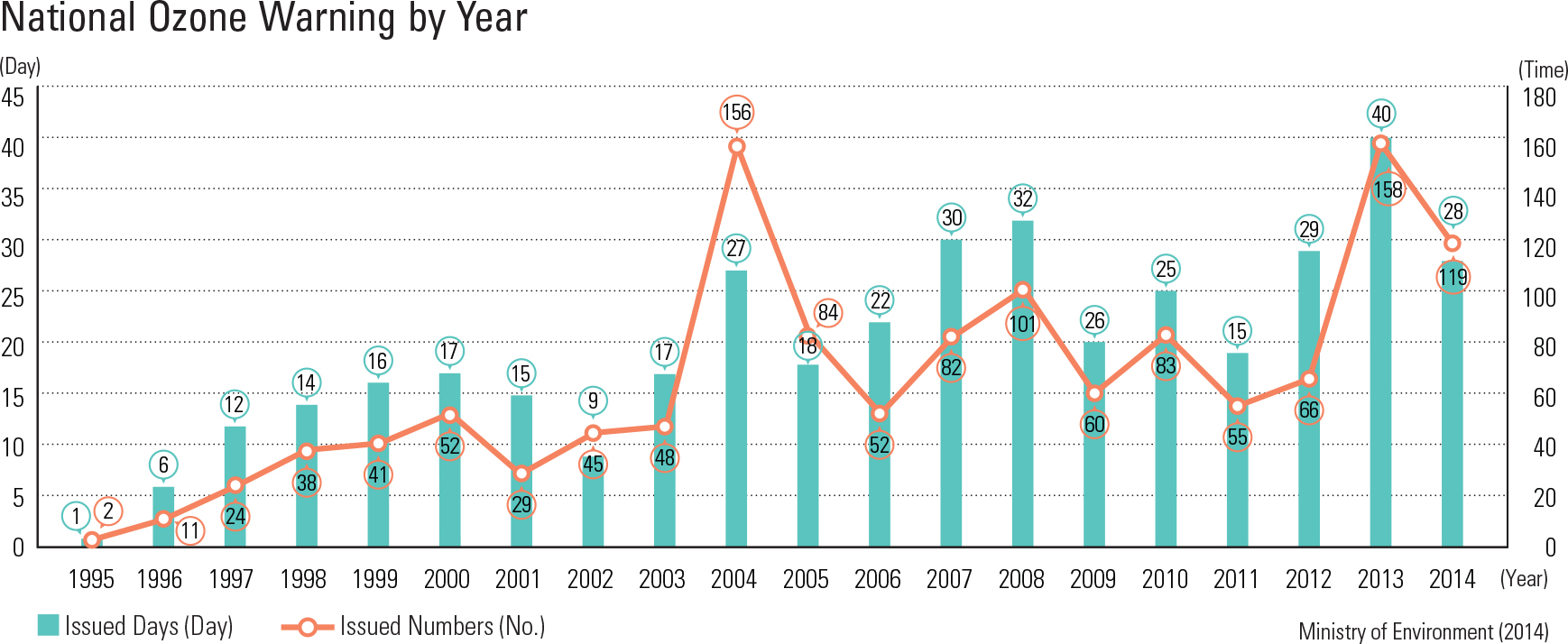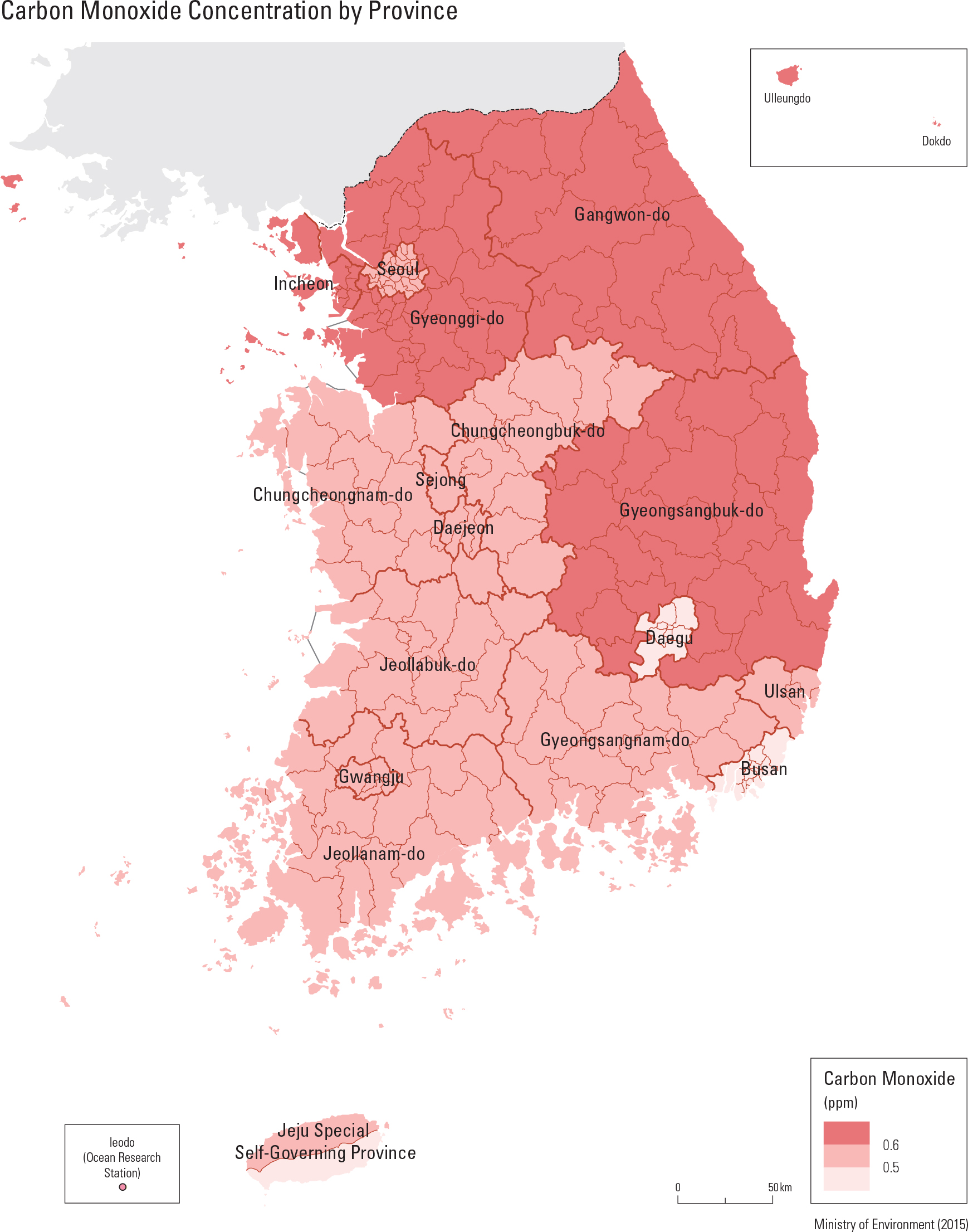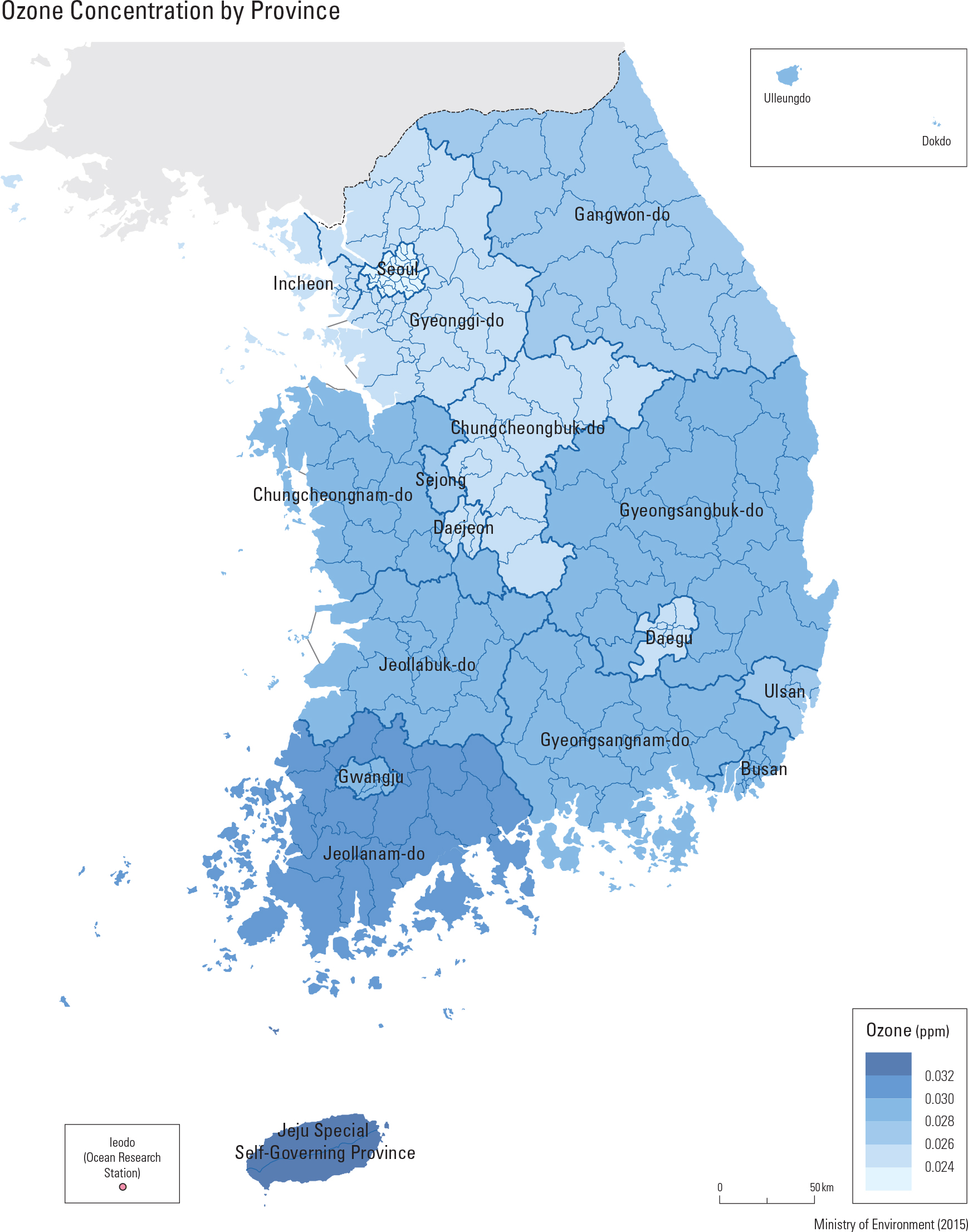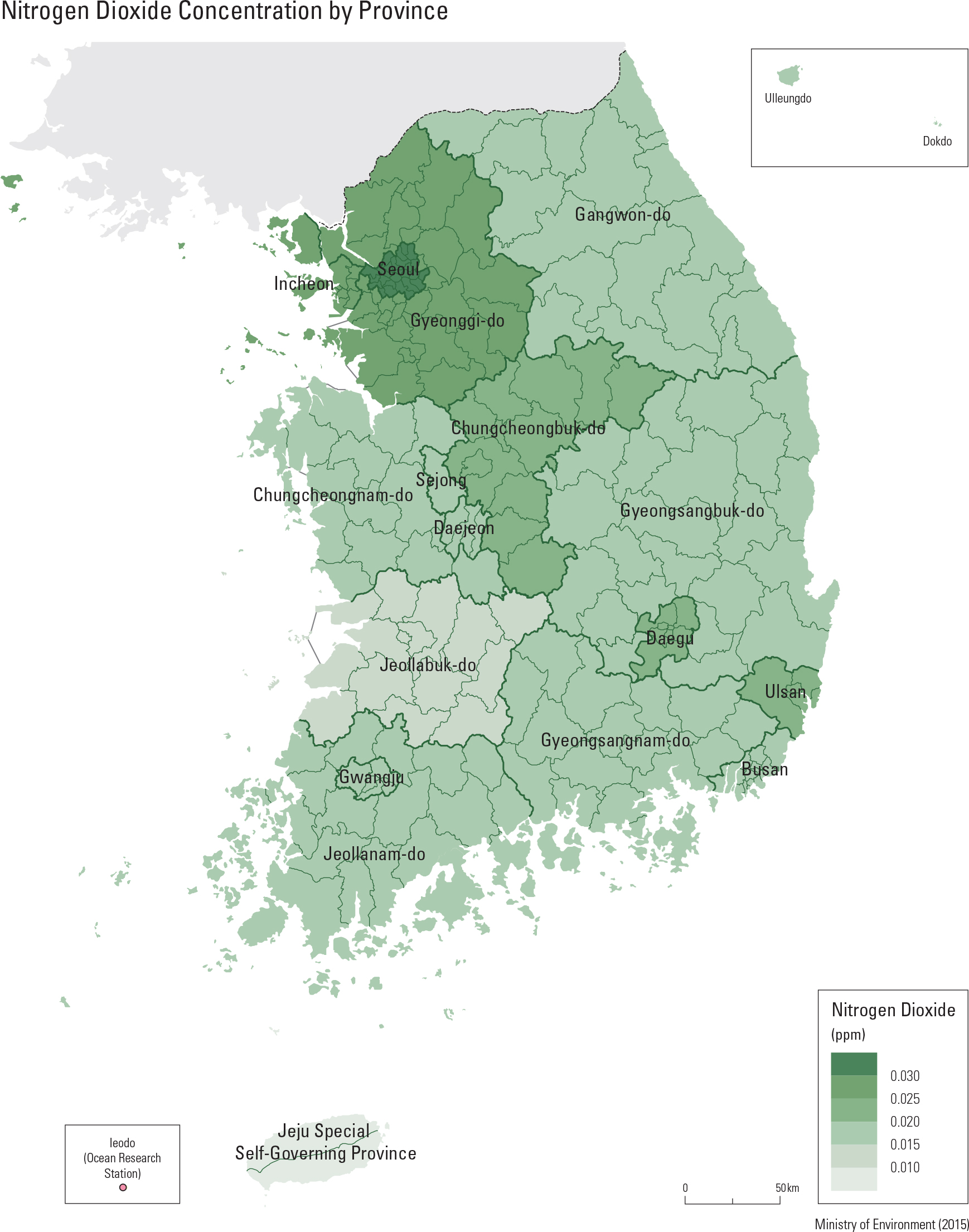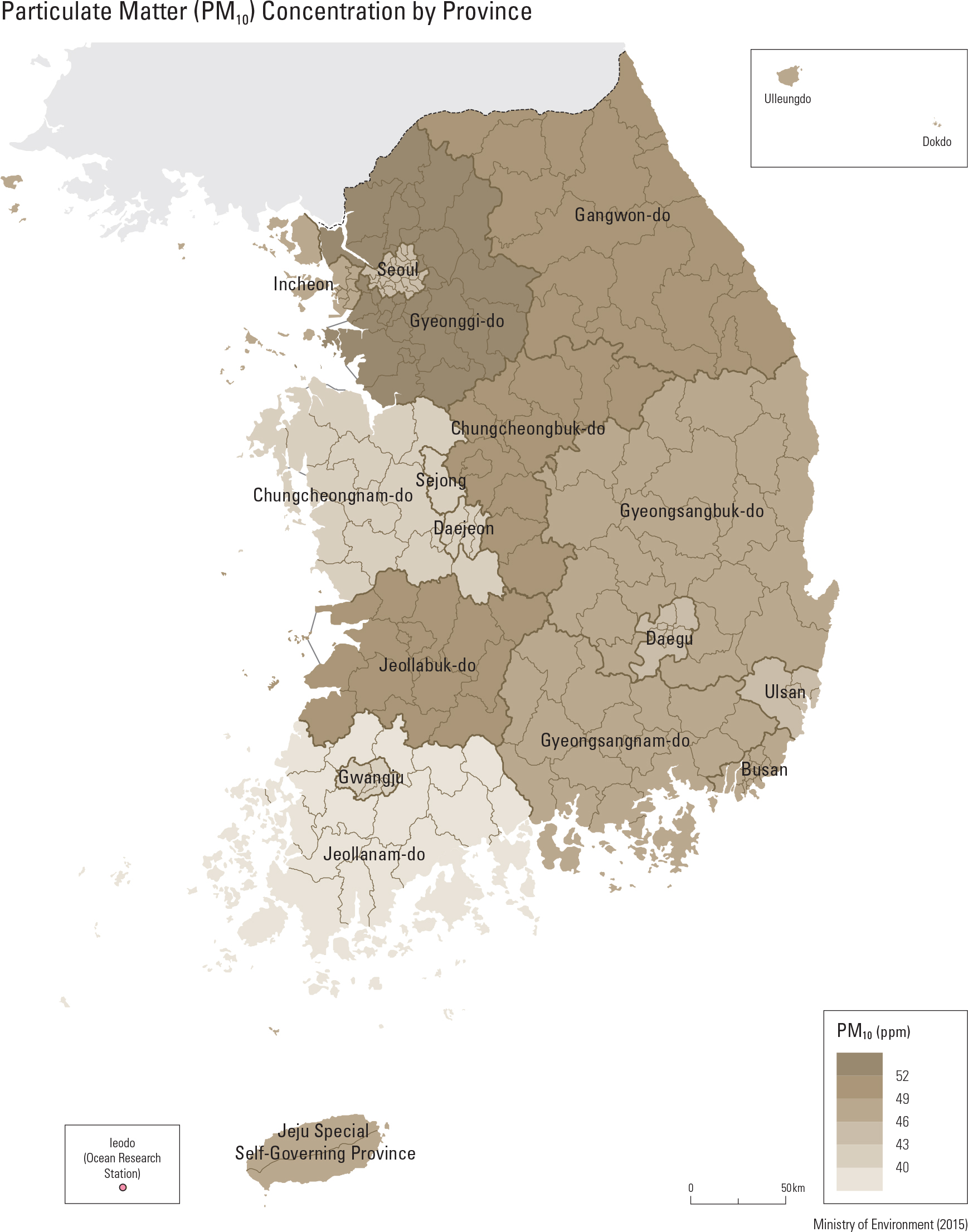English II
Korea has conducted various environmental projects monitoring factors responsible for envi- ronmental pollution, (e.g., water, soil, noise, and radioactivity) which can directly affect the quality of life. At the end of May 2015, the national air pollution monitoring network (514 stations) was implemented throughout the country to investi- gate the status and trends of ambient air pollution and to determine whether air quality standards are being achieved. This network is composed of an urban air monitoring network (259 stations), a roadside air monitoring network (38 stations), a national background monitoring network (3 sta- tions), a suburban air monitoring network (19 sta- tions), an acid deposition monitoring network (40 stations), an atmospheric heavy metal monitoring network (54 stations), a hazardous air pollutants monitoring network (32 stations), a photochemi- cal air pollutant monitoring network (27 stations), a global atmosphere monitoring network (1 sta- tion), a PM2.5 monitoring network (35 stations), and an intensive monitoring network (6 stations). Data collected by the national air pollution moni- toring network are stored in the National Ambient Air Monitoring System (NAMIS). Data on air pollution is publicized in real time through “Air Korea” (www.airkorea.or.kr), launched in Decem- ber 2005.
page_2 |
